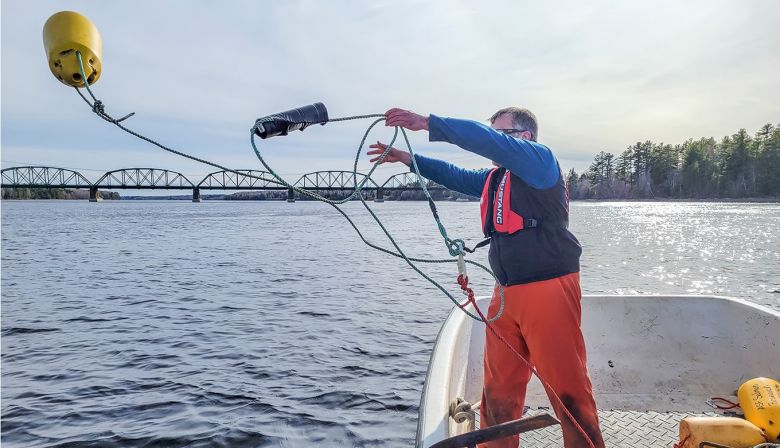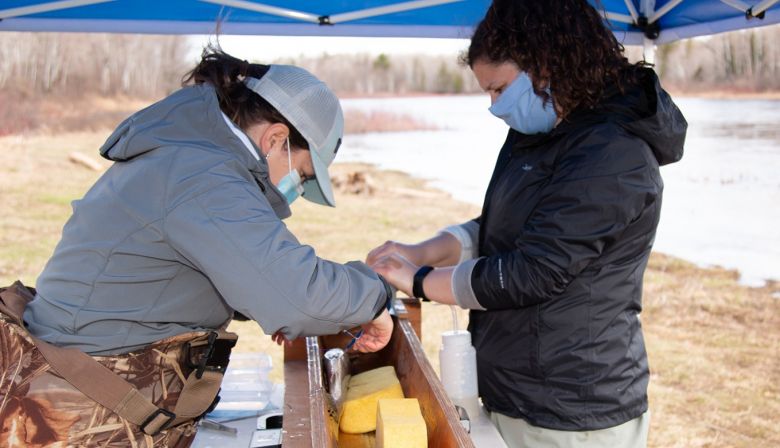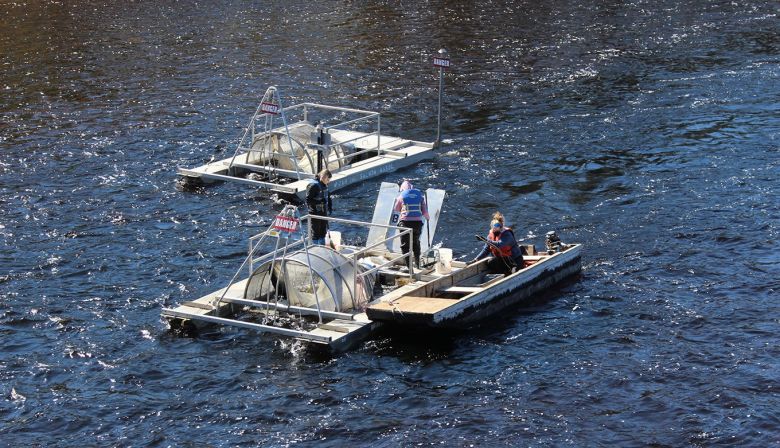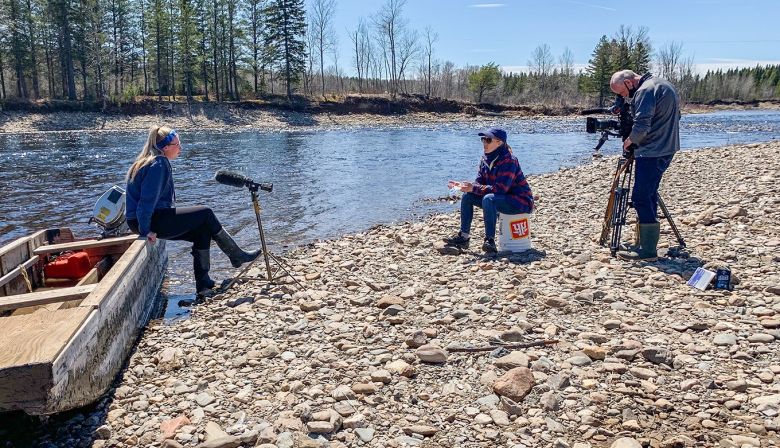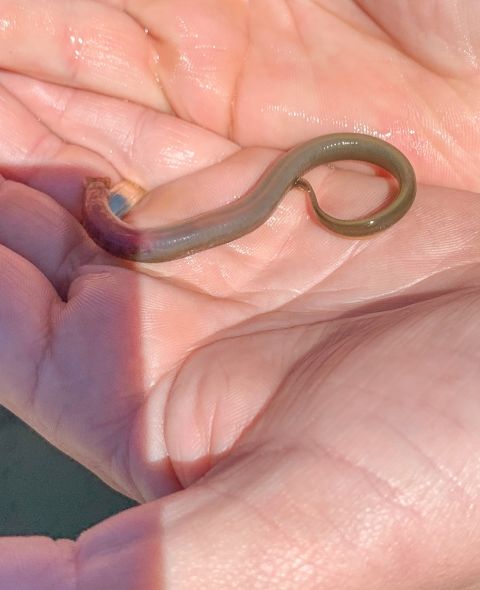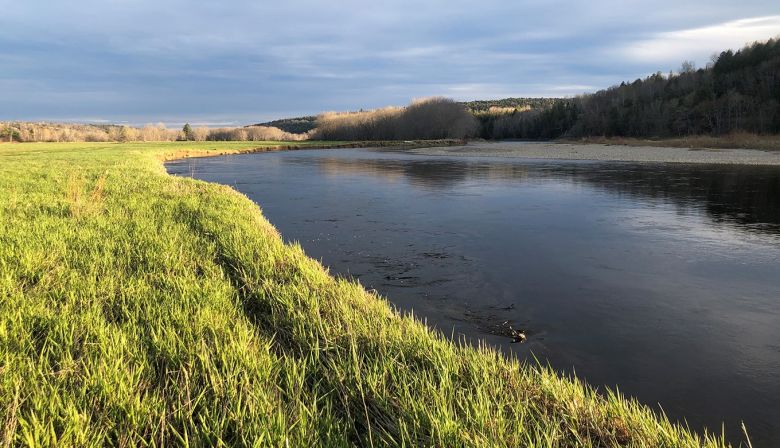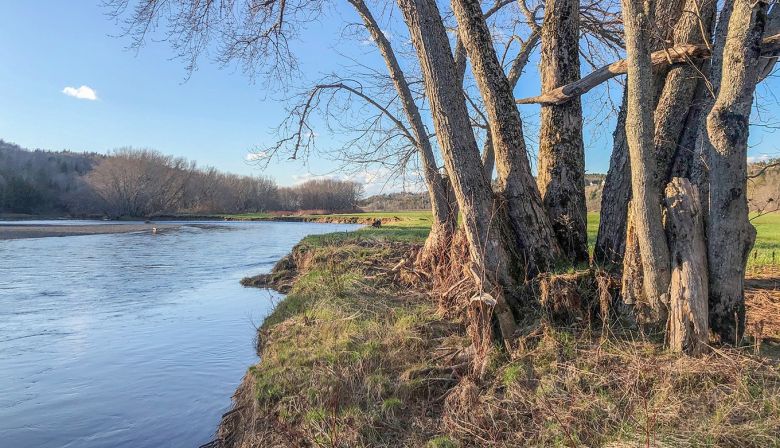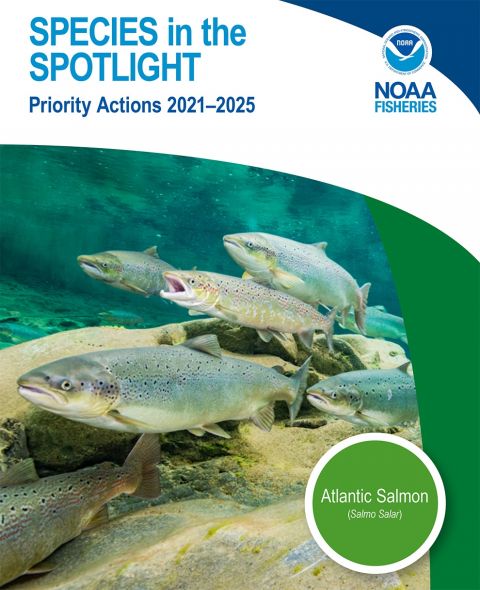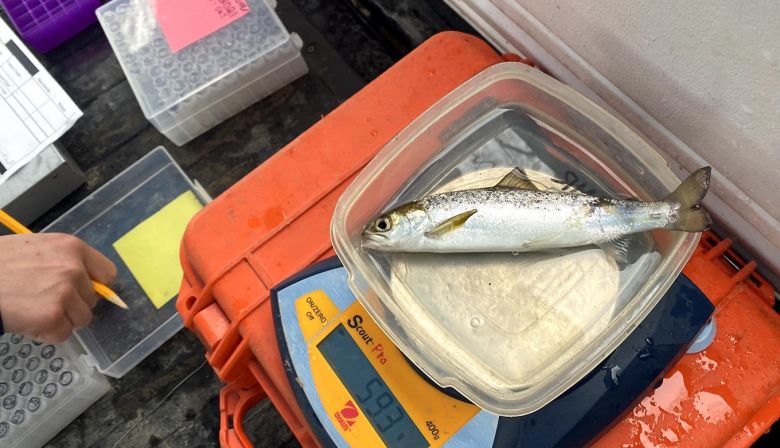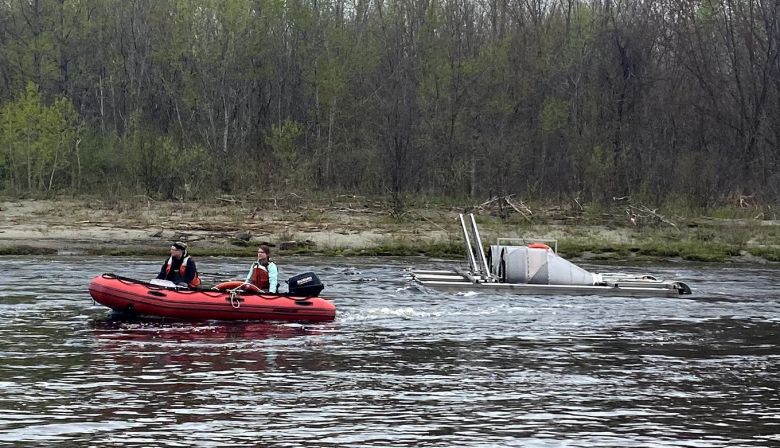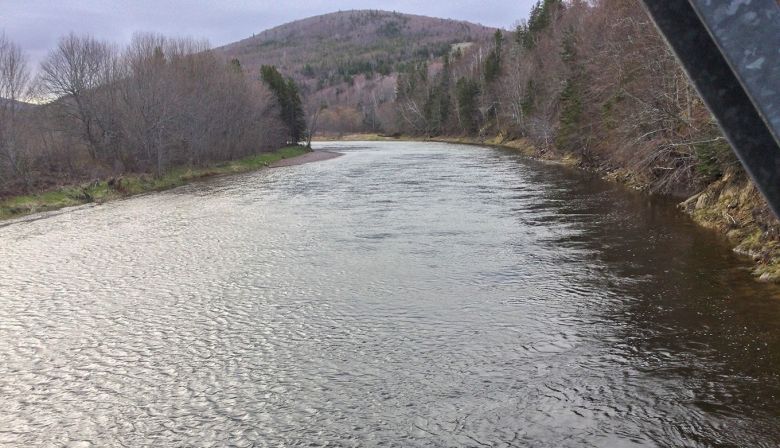Penobscot
Jason Valliere, Scientist with Maine’s Department of Marine Resources, wrote on Apr. 30:
Been a bit of a roller coaster ride temperature-wise at Milford. Last few days we have been climbing again and more numbers of herring and more species have started showing up. No salmon yet but we expect to see one any day now.
Smolt traps are being operated by Maine Department of Marine Resources. Colby Bruchs is in charge of the Narraguagus and East Machias smolt wheels, while Jennifer Noll is handling the Sandy River smolt wheel.
Narraguagus
In the smolt wheel at the Snomobile Bridge just above Route 9 (the Airline), there were 279 smolts caught by May 4, all naturally reared.
East Machias
There were 50 smolts captured at Jacksonville Briddge, of which 49 were from the East Machias Hatchery and 1 was wild.
Sandy River
The smolt migration is picking up momentum. There were 474 smolts caught by May 4. This is the first time a smolt survey has been undertaken on this river, and the results are proving to be exciting.
